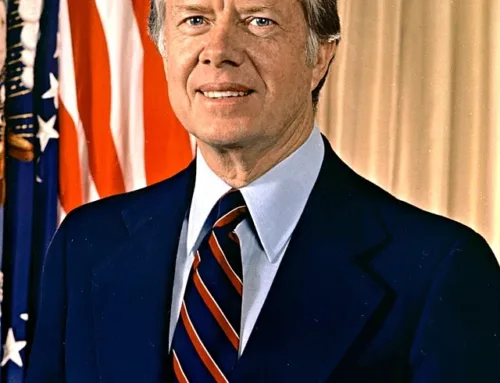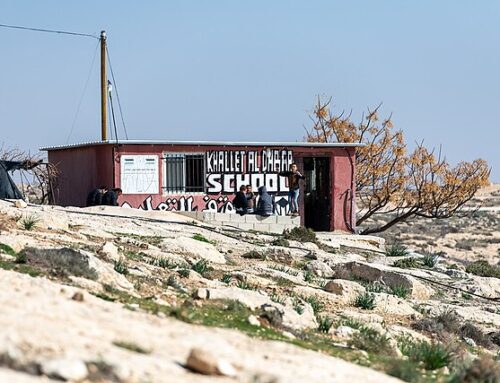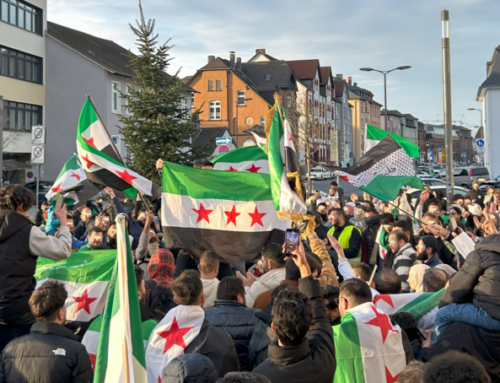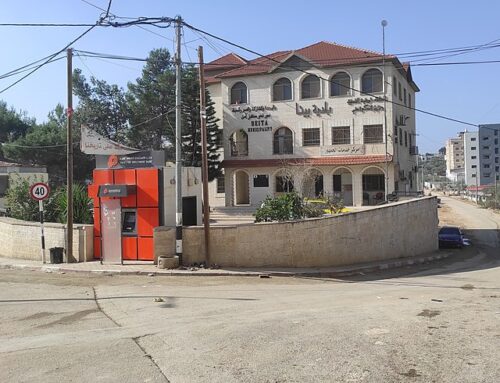I was in Israel for a month, which included six intensive days participating in the Partners for Progressive IsraeI Symposium, October 20-27. I have participated in the Symposium several times in the past.
Our first meeting was with Yossi Beilin, the former MK, cabinet minister, Chairman of the Meretz party, who was the architect of the Oslo process and a prime mover in the Geneva Accord. In 1995, Beilin reached a historic understanding with Palestinian leader Abbas on a final status agreement, which served as a basis for the Clinton parameters. He was also a negotiator at the Taba talks. He has been at the business of peace for several decades. He was anecdotal, sharing choice tidbits about Netanyahu; but concerning the Arab-Israeli conflict, he was modest, settling for an interim agreement for now.
 |
| Grafitti at Separation Wall, Kalandia |
We met with more than 30 people, from top Likud officials, to opinion makers, political activists, bloggers and those running NGO’s such as B’Tselem, Rabbis for Human Rights and Physicians for human Rights. We traveled to the West Bank, saw the settlements, and went to Hebron. We met with our Meretz friends: among them Naomi Chazan, Meretz head Zahava Gal-on, diplomat Ilan Baruch (a new recruit to Meretz who was a career diplomat); also with noted journalist Aluf Benn, blogger Noam Sheizaf and pollster Kalman Gaier. We met Dani Dayan, Chairman of the Yesha Council who argued against a two-state solution, as he wrote in the pages of the NY Times, that an independent Palestinian state between Israel and Jordan would be a “recipe for disaster,” a hotbed of extremism. He really rattled the group with his unabashedly, self-righteous position that God was on the side of the settlers, in spite of the fact that he defines himself as a secular person who believes in equal rights (says he had boycotted apartheid South Africa).
We traversed the Kalandia checkpoint and the “Separation Barrier” — which runs approximately 400 miles — mostly a fence & trench system, with 10% being a 26-foot high concrete wall covered with murals of Arafat and other anti-occupation art work. We are accompanied by an armed Palestinian security detail to our meetings with Palestine Authority officials. Along the road I note that Ramallah continues to thrive and construct new buildings. We met with PM Salaam Fayyad, PLO Executive Council member Dr. Hanan Ashrawi, PLO Secretary Yasser Abed Rabbo, and American-Palestinian businessman Sam Bahour.
Fayyad is everyone’s favorite Palestinian. He is like a gentle gnome — reasonable, determined, and enthusiastic. He makes one believe in his mission, to create the infrastructure of a Palestinian state. He makes me believe there might be a future.
When we met with the sophisticated Dr. Hanan Ashrawi, rare tension flared up in our group when several of us were dissatisfied with her resistance to acknowledging Israel as a Jewish state. While Naomi Chazan insists we don’t need the Palestinians to acknowledge the Jewish nature of Israel, some of us (like me) insist on it. The argument Ashrawi makes is that Palestine is for all religions, Jews, Christians and Muslims. Presently there are hardly any Jews living in the Arab parts of the West Bank, except in the Jewish settlements. We pressed her to acknowledge Jewish peoplehood, something rarely done by Palestinians and then we all politely shook her hand and left.
From the very beginning of the Symposium I had determined to ask each speaker what he or she thought of a one-state option. Most of our interlocutors dismissed it; that would mean the end of a Jewish state, I was told. I persisted in asking because I wanted to learn if anyone was seriously working on the issue. A friend of long standing, Danny Gavron had written about a one-state option at least 15 years ago. Anticipating that demographics would favor Arabs in the future he called for an Israeli constitution that would guarantee rights for any minority. Not one of the people we met with favored such an option. Israeli historian and journalist Ron Pundak, co-chairman of the Palestinian-Israeli Peace NGO, who played an important role in starting the Oslo peace process in 1993, was the most pessimistic of all our speakers. He had little hope left for the two-state solution, yet had nothing to say on the one-state option.
Around this time I began feeling that nothing had changed. Those we met on the Right either justified or never mentioned Occupation, and our friends on the Left said the right things, but their political future appeared bleak. They were all remarkable wonderful moral people, but I felt they were fighting a losing battle, an opinion substantiated by a survey published in Ha’Aretz about how Israeli Jews view Arabs: It confirms that a substantial percentage of Israelis are anti-Arab, racist, and justify the “apartheid” roads on the West Bank for security reasons. Then I read an article objecting to the methodology used in this survey. Most Israelis have never met a Palestinian except for when much of the construction work was done by Arab labor; now there are other foreign workers. Another statistic caught my eye, 54% of the children entering kindergarten this year are ultra-orthodox. We know that around one-third of the Israel Defense Forces infantry officers are religious. From that we can extrapolate that Israel is quickly moving towards a religious-nationalist majority.
A few years ago when the Meretz Symposium went to Hebron, it was a grim experience. Below the Machpelah, the second most holy place to Jews, where the patriarchs Abraham and Sarah were buried, was an empty street leading into the former Arab market. It was lined with shuttered stores marked with Stars of David reminiscent of photos of German streets in the 30’s with anti-Jewish markings. On this trip Hebron smelled of normalization, there were freshly painted murals with text about Jewish life in Hebron prior to 1948. The streets were clean and empty (prettified) except for tourist buses. The Arab boys selling souvenirs were kept on their side of the street.
Later, we stood at Har Homa. I recalled standing on a hill overlooking this neighborhood 5 or 6 years ago and our guide pointed out a yeshiva on top of one of the buildings. That is how it all started. Now it is a neighborhood of 30,000 with excellent bus transportation to Jerusalem’s center. Its planned further expansion will block off natural access between East Jerusalem’s Arabs and the West Bank, and preventing a Palestinian capital there.
After the Symposium I attended a meeting of the heads of the Peace NGOs entitled “Two-State and other Alternatives”; it could have been called, “Despair or Inaction.” At the beginning, Ron Pundak and General Shlomo Gazit presented their grim views about the prospects for a two-state solution. A line of speakers followed, all in the same pessimistic tone, but then Gadi Baltiansky of the Geneva Initiative came up and delivered a rousing cheerleading speech. Jeremy Ben-Ami of JStreet was there to second Gadi’s position. You have to fight, he said, speaking of his own experience, and exhorted those present not to give up. I believe that Gadi and Jeremy turned the tide.
One of my last meetings in Israel was with Meron Benvenisti, known as the Prince of Doom, who believes the two state option is finished. When I asked him about his details for one state option where Jews and Arabs and Jews will live together because the Land belongs to both of them, he advises me to read the last chapters of his new book “The White Sabra” in which he details how one state would work. (Being in Hebrew, it will take me time to read.) Benvenisti dismisses American Jewish political action; what they do politically on behalf of Israel, he believes, is in fact done for their own benefit and not for Israel’s.
I conclude painfully, in the midst of this present conflagration, which could become a regional war, that the American Jewish community that voted 70% for Obama and Israel are like two ice floes drifting further apart. Peter Beinart wrote in “The Crisis of Zionism” to that effect. Israel is no longer the socially progressive country where kibbutzim once supplied one-third of its military officers. The values of the kibbutz movement no longer dominate the culture. The new Israel is a dynamic capitalist country with a future majority of hardly educated Ultra-Orthodox Jews and a growing Arab population, that will face a future crisis.
Returning to the here and now, there is a growing realization that you can’t have another ground war in Gaza because it would only repeat what happened four years ago. A noted right-wing columnist Ben Dror Yemini is urging Israel to make a move which no one expected: follow a unilateral cease-fire by inviting Hamas to peace talks. Yesterday, in a conversation with one of my cousins, who grew up in a Jabotinsky/ Herut home, he told me he was urging right-wing members of the Knesset not to enter a ground war. There is change. Perhaps it is too late, but I hope not.






Dear Lily,
Contrary to what you write, I never mentioned God or God-given rights in my talk.
Dani Dayan
Chairman, YESHA Council
Good to know that Meretz members have again focused like a laserbeam on the vital and incontrovertible issues needed to achieve peace, taking the time to press Hanan Ashrawi on this central point, without which Israelis and Palestinians will never be able to live as neighbors:
“We pressed her [Ashrawi] to acknowledge Jewish peoplehood.”
Surely Likud, Labor and others would have failed to take on this mission. So fortunate that we have Meretz to educate Hanan Ashrawi about Jewish peoplehood.
Ted